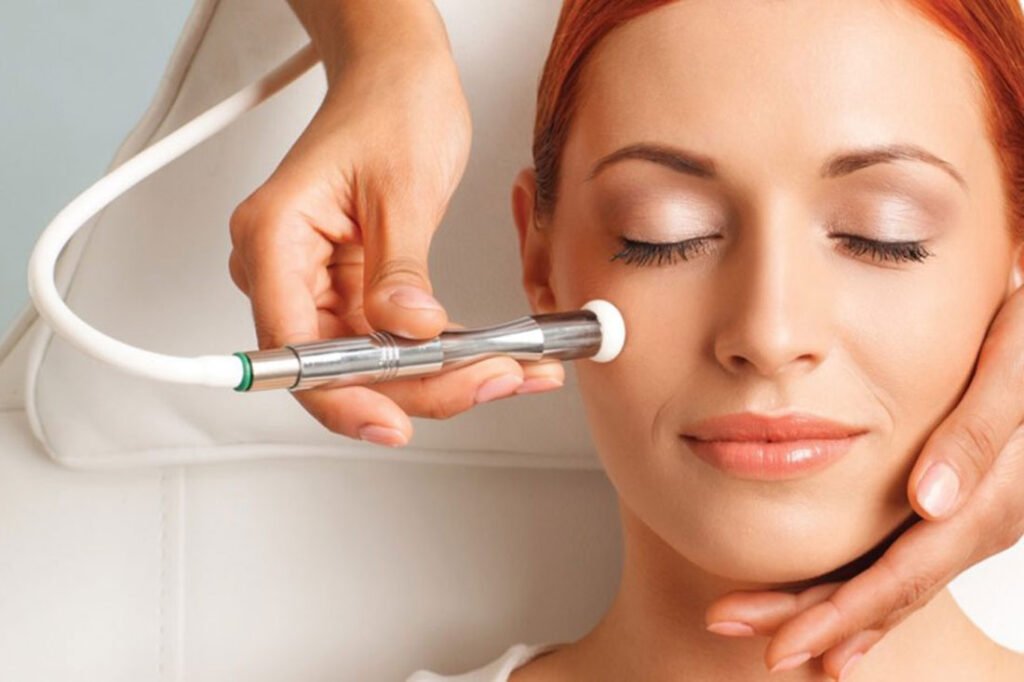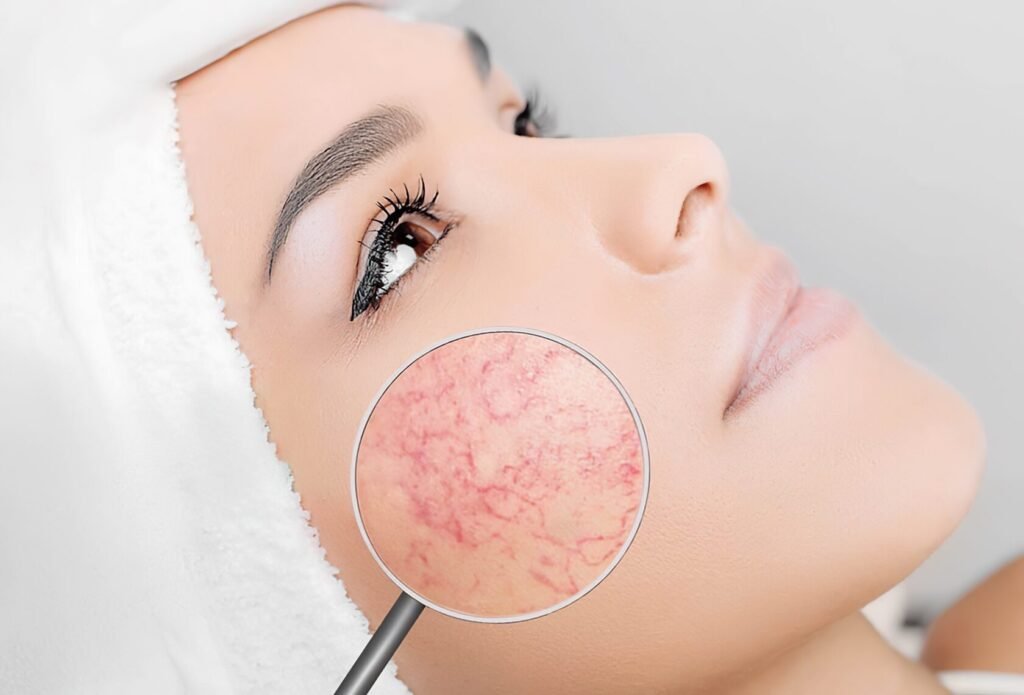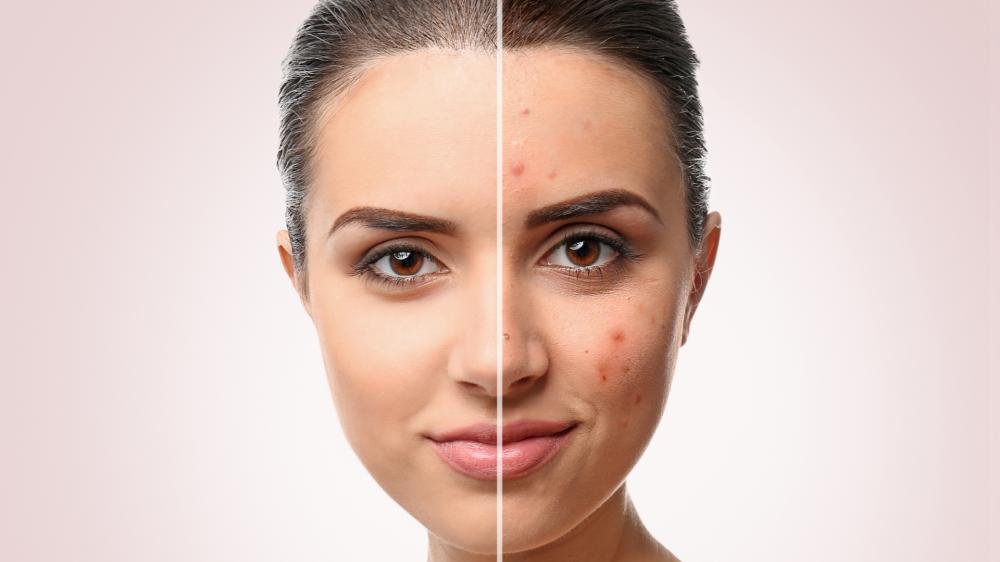Laser Treatment for Skin Diseases have become one of the most innovative tools in the world of dermatological intervention in skin pathologies.
Focused light energy in the form of lasers is precise enough to penetrate a certain thickness of the skin and it has use in both treating and beautifying.
With regard to the treatment of such diseases, such as psoriasis and vitiligo, to elimination of scars and hyperpigmentation, Laser Treatment for Skin Diseases has a great popularity among patients as an effective, minimally invasive method of intervention.
This exceptional method not only reduces the amount of time to carry out the work but also ensures the results can be permanent which is why many people prefer it.
In light of these trends in technology, lasers are recasting the way we address skin problems, offer hope, and formulate proper treatments for the once intractable diseases.
As this article will reveal, Laser Treatment for Skin Diseases is effective, has numerous dermatological uses, and is revolutionary when it comes to skin disease control.
What is Laser Treatment for Skin Diseases?
Laser Treatment for Skin Diseases is the use of light energy in the treatment of different skin ailments and with the aim of enhancing the health and texture of the skin.
LASER is an acronym for Light Amplification by Stimulated Emission of Radiation as it is a device that discharges a concentrated stream of light.
This light is then taken up by special target cells in the skin, such as melanin (pigment), hemoglobin (the protein in blood vessels), or water in the tissue depending on the disease being treated.
Laser treatment for skin diseases is unique and can be adapted to address different skin ailments; though it can be used for prevalent disease or inflammation for instance psoriasis, inflammation such as rosacea, pigmentation difficulties, and scarring.
These treatments are effective in that they vary removing or putting back skin tissue, generating collagen or minimizing pigmentation and artery growth.
Key benefits of Laser treatment for skin diseases include:
- Precision: Aim at the lesions and other infected sites but does not have impact on other skin surrounding it.
- Minimally Invasive: Offers effective results with minimal downtime.
- Versatility: Is effective in treating many different skin disorders.
There is new technological development in the lasers which means that dermatologists will be able to use different types of the lasers; fractional lasers, pulsed dye lasers or CO2 lasers according to the need of the patient and the skin condition.
This makes Laser treatment for skin diseases one of the most useful and interesting procedures in the field of dermatology nowadays.
Diseases Treated with Laser Treatment for Skin Diseases

Laser treatment for skin diseases is an all-purpose instrument in the dermatological practice, which contributes efficient treatment for different skin diseases.
Below are some of the most common diseases and concerns that can be addressed using Laser treatment for skin diseases:
1. Acne and Acne Scars
- Retards the active acne because it has an effect on the overstimulation of sebaceous glands.
- Treatment preferred in the removal of acne scars due to its ability to promote collagen synthesis as well as skin remodelling.
2. Psoriasis
- Excimer lasers emit UVB radiation to the areas of the skin affected by the condition, limiting the exceedingly high proliferation rate of skin cells characteristic of psoriasis.
3. Rosacea
- Eliminates redness, broken blood vessels, and inflammation from accumulated damage in capillaries employing pulsed dye lasers.
4. Pigmentation Disorders
- Melasma: Removes accumulating melanin pigment which is responsible for dark skin patches.
- Hyperpigmentation: Heals and evens skin tone by the process of eliminating blotchy pigmentation.
5. Vitiligo
- Conditions depigmented patches with excimer lasers.
6. Warts and Skin Growths
- Erases hard to treat warts, skin tags, and other benign skin formations by using the heat to burn the target skin layer.
7. Scars and Stretch Marks
- This input works on scarring such as surgical scar, trauma scar and stretch mark by chemically removing the layer of scar skin and reconstructing the skin layer.
8. Vascular Conditions
- Spider Veins: Aims and destroys microvascular units that are easily discernible.
- Hemangiomas and Port-Wine Stains: Vasculopathic birthmarks can be minimized or eradicated, persistent skin lesions can also be neutralized.
9. Aging Signs
- Wrinkles and Fine Lines: Makes the skin produce collagen in order to get a smooth skin.
- Sun Damage: Corrects Sun damage and also works on other photodamage related problems.
10. Hair Removal and Related Follicular Problems
- Once and for all eliminates unwanted hair since it targets hair follicles.
- For special cases of skin problems like ingrown hairs and folliculitis.
11. Skin Cancer Precursors
- Erases actinic keratosis (a precancerous disease) since it affects specific cells only.
12. Tattoo Removal
- Enzymes that facilitate stereometric interaction and aqueous dissolution of pigments in the tissue hence helping the body to expel it after several years.
13. Keloids
- Helps prevent raised scars because they limit collagen deposition.
Laser treatment for skin diseases provides dermatologists with an opportunity to provide optimal, non-surgical and efficient therapy personalized on the condition of the skin and its functions and appearance.
Read More: Under Eye Filler: Unveiling the Brighter Side of Fillers
Benefits of Laser Treatment for Skin Diseases

Laser treatment for skin diseases stands out as a very effective modality for controlling and treating skin diseases through the following opportunities:
1. Accurate and Advanced Therapy
- They do not affect the healthy cells near the targeted region because they are incredibly precise in skin lesion treatment.
- This makes it perfect for use on areas such as the face which are very sensitive.
2. Minimally Invasive
- Cohesive sutures usually do not necessitate any cuts thus spending less invasive than surgical measures.
- Has an ability in decreasing the chances of getting infection and the development of scar tissue.
3. Versatility
- Able to be used for the treatment of most skin conditions; such as acne, skin discoloration, blood vessels, and scars.
- As well as in so called aesthetic purposes like wrinkle removal and hair elimination.
4. Faster Recovery Time
- In general, most laser treatments are associated with lesser down time than the conventional surgeries.
- Many patients are allowed to go home and function normally in a few days.
5. Stimulates Natural Healing
- Enhances the body’s collagen synthesis and hence makes the skin to become smoother, firmer and young.
- Facilitates body healing with some of the skin ailments such as scars and stretch marks.
6. Customizable Treatments
- Laser types and its varieties such as, ablative, non-ablative, fractional etc., can be customized according to the individual’s needs.
- Enables treatment of skin type and skin disorders of all kinds of skins.
7. Long-Lasting Results
- Most treatments for instance laser hair removal or treatment of skin pigmentation give long-lasting results that may only require regular touch-ups.
- Facial marks and lines usually undergo considerable, irreversible improvement.
8. Safe and Effective
- As much as it is a technique of treatment, Laser treatment for skin diseases should only be carried out by a dermatologist, it has very few side effects.
- A contemporary use of lasers removes discomfort and enhances accuracy for patients.
9. Reduced Pain
- Lasers now come with enhanced cooling mechanisms that reduce the level of discomfort exhibited during Laser treatment.
- Less often, the situation requires general anesthesia, which is rarely needed in the course of ordinary operations.
10. Improves Skin Appearance
- Removes pimples, redness, and skin discoloration and improves the general skin surface, making it glow.
- As an addition to the treatment the patient receives cosmetic advantage.
Laser treatment for skin diseases is a contemporary, efficient method of skin diseases’ treatment and skin state improvement, which also takes into account the results.
Patients should always seek medical advice from dermatologists in order to decide on the appropriate form of a laser for their skin.
Risks and Considerations in Laser Treatment for Skin Diseases

In general, laser treatment for skin diseases is safe and effective; however mild modulated full report cons and precautions should not be overlooked. Below are the key factors to keep in mind:
1. Skin Irritation and Redness
- Temporary Redness: Rash, inflammation, and redness of the treated area are normally experienced sometime after treatment is conducted on the skin. This usually takes a few hours to a couple of days.
- Post-treatment Sensitivity: Any further exposure to the sun may be dangerous as the skin becomes sensitive to sunburn after undergoing this procedure.
2. Hyperpigmentation and hypopigmentation
- Darkening of the Skin (Hyperpigmentation): At times it is seen that people develop darkened areas after the laser treatment or patches of black skin color in case of black skinned individuals.
- Lightening of the Skin (Hypopigmentation): Laser treatments can sometimes lead to patches of skin that are a different color from the rest of the skin and they may be permanently pigmented.
3. Scarring
- Laser treatments are presumed to be medical procedures that are minimally invasive and physical scarring should not be a common occurrence there from but if the technique used or the laser type selected is wrong for the skin type then scarring will be experienced.
- This is why it is essential to be attentive to the procedure, and make sure that it is being carried out by a skilled and professional dermatologist to avoid this as much as possible.
4. Infection
- Despite this, infections are relatively rare if the instructions given to patients after the procedures are not followed strictly. To minimize this risk, the area that has been treated should be kept clean and one should avoid touching it using dirty hands.
- There are some side effects, which should be prevented, such as sunning and use of proper sunscreen after treatment.
5. Pain and Discomfort
- Only a few people may feel a slight pain or discomfort when they undergo the procedure but modern laser treatments come with special cooling to reduce pain.
- To reduce the sensation of pain patients may be prescribed anesthetic creams or local anesthetic.
6. Risk of Burns
- Professional treatment with high-intensity lasers can lead to injury if the treatment is done wrong. Treatment should be carried out by a professional using the right laser that is suitable for a given skin type.
- One rare complication of Burns was the likelihood of developing scar tissues or further damage and deterioration to the skin’s condition if not well treated.
7. Inappropriate for All Skin Types
- Thus, not any skin type can be treated with any type of laser. It may also be that some skin types are not suitable for certain lasers, or that extra side effects will occur in very dark or very light skinned people.
- In some cases a patch test may be advised before the procedure to test the skin’s response to the treatment.
8. Multiple Sessions Required
- That is; for specific skin complications such as deep scars, acne and wrinkles, may require serious laser treatments. The total number of treatments that have to be provided depends on the severity of the skin condition being treated and the skin reaction to this treatment.
9. Costs
- Laser treatment for skin diseases can be costly, and the total cost can be higher in relation to the number of sessions undertaken.
- Unfortunately, insurance usually does not take care of cosmetic laser treatments and one needs to think within the budget.
10. Not Suitable for Active Skin Conditions
- Patients with cold sores or fever blisters, acute acne, or a history of eczema may not be eligible for a laser treatment. Laser therapy is only advisable where the status of the patient’s oral health has been stabilized or improved; it is advisable to treat the underlying disease first.
To sum up, laser treatment for skin diseases informs a lot of advantages but requires cautiousness about dangers and careful adhesion to the specialists’ indications to avoid the adverse effect.
In Conclusion
Laser treatment for skin diseases is one of the best and safe techniques employed in the treatment of skin disorders.
Acne scars, pigmentation problems, skin diseases or even simple lines and wrinkles, lasers can provide a direct treatment that can make a big difference in the appearance and health of the skin.
The laser technology causes less discomfort as well as less post-surgery time needed as compared with common surgical processes.
Yet, like any treatment procedures it would also be correct to note that it does carry some risks associated with it.
Patients should closely discuss with their dermatologist or other qualified medical practitioner to find the best laser treatment for their skin type and the condition being treated. Besides, great care must be taken after the procedure and following all the rules of professionals to prevent unfavorable outcomes and receive the best result.
Altogether, it might be noticed that many skin issues can be solved or significantly improved by means of laser treatment for skin diseases; however, to achieve more effective and less dangerous results, the main procedures carried out by an experienced specialist and safety rules’ observance should be followed.
Used properly, laser treatment for skin diseases can prove to be a breakthrough treatment for various skin conditions making the skin look younger and healthier in the long run.

